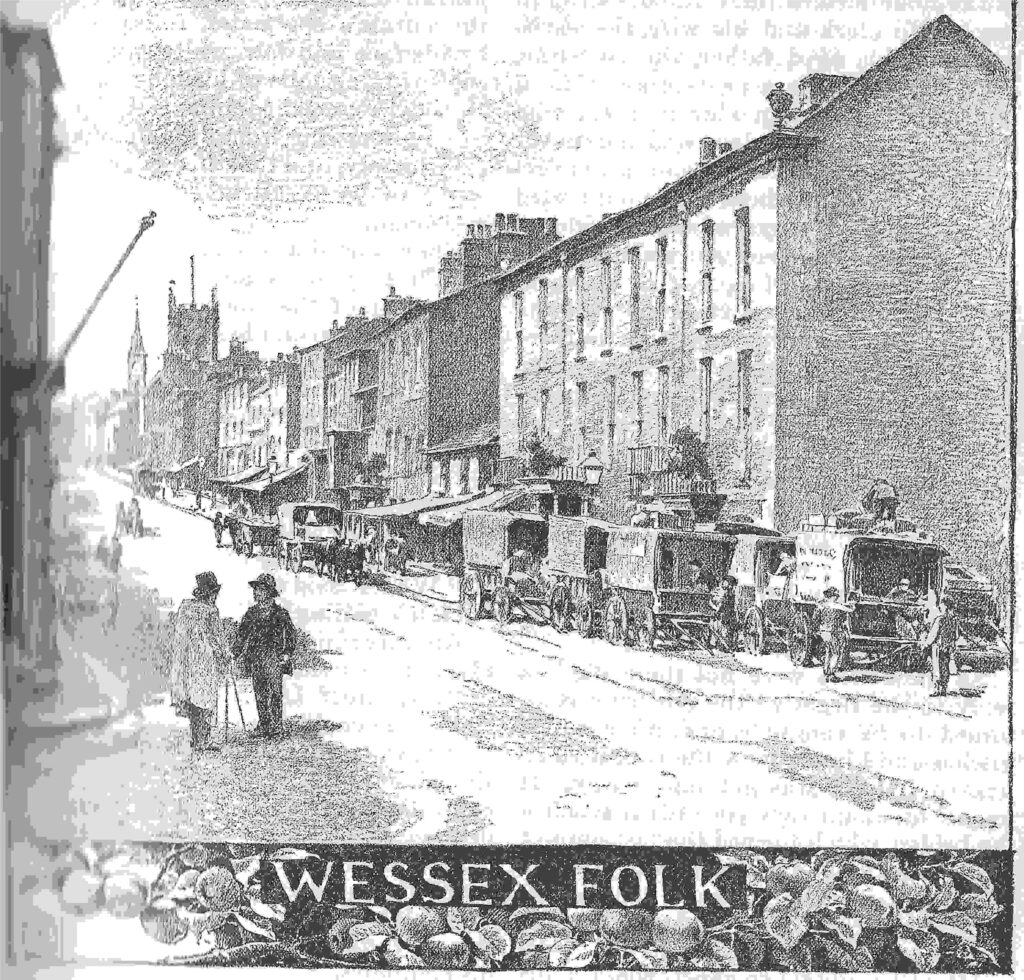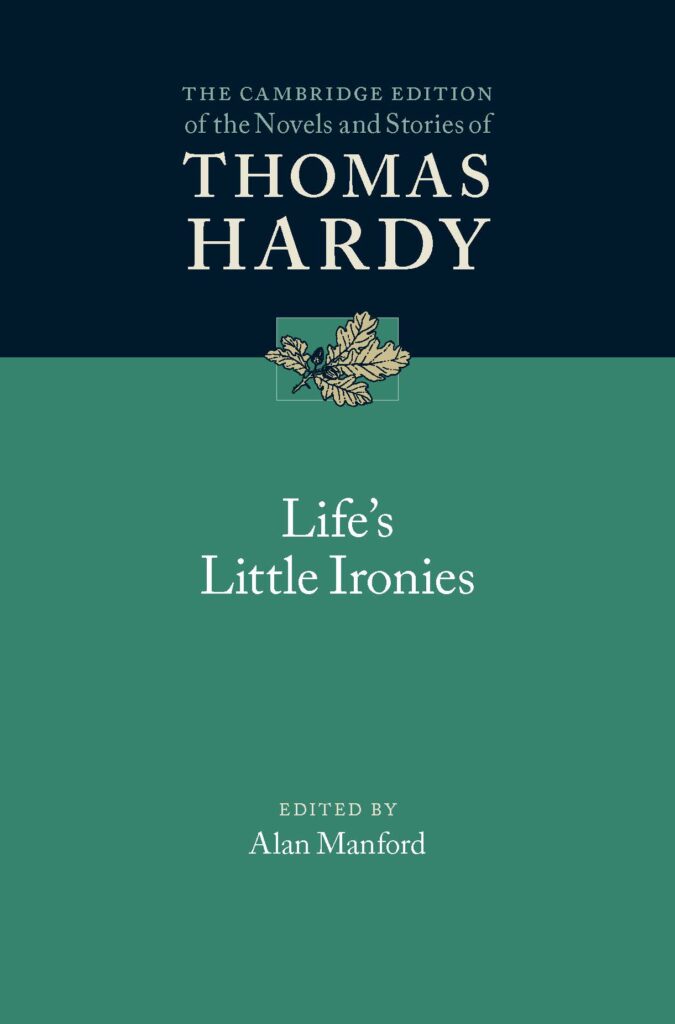
This illustration appeared at the start of the serialisation of Thomas Hardy’s “A Few Crusted Characters” (then called “Wessex Folk”); afterwards collected into the volume of Life’s Little Ironies. It shows a main street in Dorchester (Hardy’s Casterbridge) and gives an impression of the life of its people. Using words, Hardy does something similar, but more illuminating, in this volume. He presents the people as they face life, with its difficulties and moral dilemmas, the life’s little ironies of the title (which may sound like a common saying but was in fact coined by Hardy).
Thomas Hardy may be regarded as a great novelist and a great poet. He is also a master of the short story form, and it is the aim of this edition of Life’s Little Ironies to allow the reader to appreciate this, partly through presenting sound texts (in this case, as the early readers would have encountered them), but also by providing an insight into Hardy’s working methods and providing material to show how he developed his stories.
Editing a volume of short stories involves treating each independently (at least until they were gathered into a volume, and to a large extent after that also). The material available to inform the editing of each of the stories in Life’s Little Ironies varies a great deal. For some, Hardy’s sources are more evident than for others (for example, ‘The Melancholy Hussar’, which even quotes a real church register). All the stories were published first in magazines (some in more than one), which impacted on the text; a prime example of this is ‘On the Western Circuit’ which Hardy himself bowdlerised (this version is given in an appendix in my edition). For some stories the manuscript that served as printer’s copy is extant, for others it is not. A couple have evidence of more than one manuscript (and one has a typescript in addition). The manuscript of ‘A Few Crusted Characters’ is of particular interest as it is Hardy’s first draft and shows how he works—he even keeps count in the margin of the characters. We can also observe his practice when correcting proofs, as these exist for the volume’s first edition. All of these varied materials are presented in the current edition for the benefit of the reader.
For me, editing Thomas Hardy’s work is a privilege. That I can read each story in close detail many times over and each time my admiration increases is testament to the quality of his work. As editor of this volume, I have spent much time with the stories but have not seen them merely as specimens for scholarly study. I have on occasion reacted to them in a less earnest manner. Here, mainly in haiku form, is the result of one such reaction; perhaps, when familiar with the stories, the reader might enjoy the challenge of recognizing which story is represented in each (they have been shuffled).
Based on true story
homesick boy meets lonely girl
ends with court martial
Can we believe that
Boney visited Britain
seen by shepherd boy?
Conscience urges man
to atone for youthful sin
unwise decision
Courtship by proxy
love and the illiterate
misled by letters
Envious woman
foolishly competes with friend
loses all she loves
Mother’s re-marriage
forbidden by snobbish son
happiness vetoed
Prodigal father
mother’s savings soon squandered
ambitions thwarted
frustrated sons turn sinners
but beloved sister saved
Woman seduced by
music’s hypnotic magic
loses will and child

Latest Comments
Have your say!